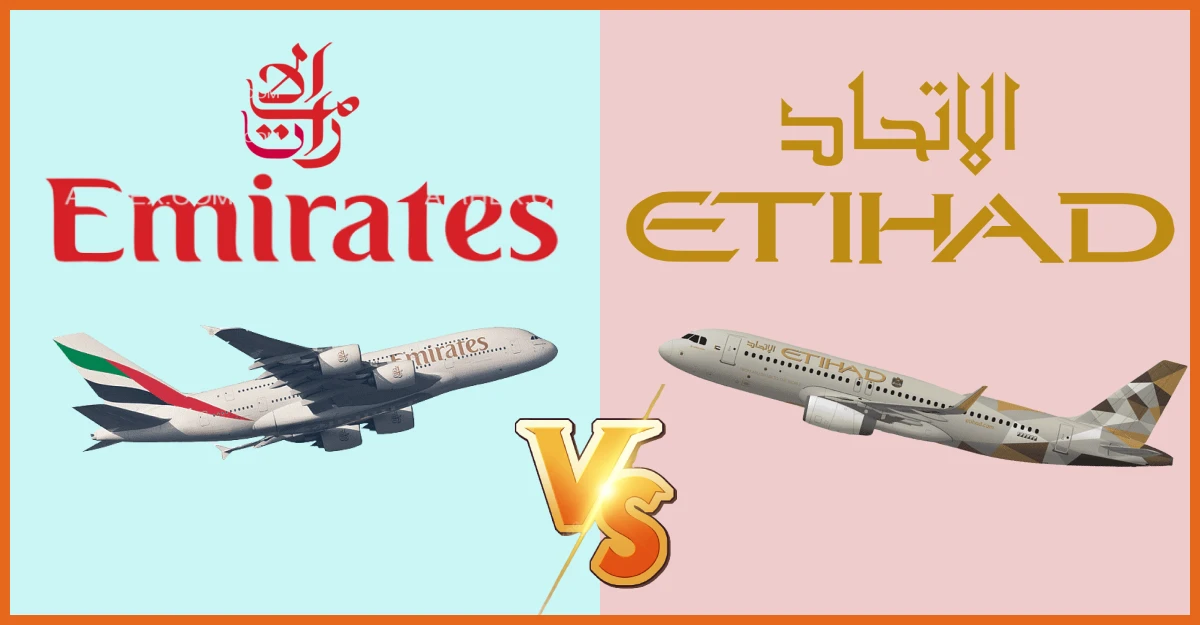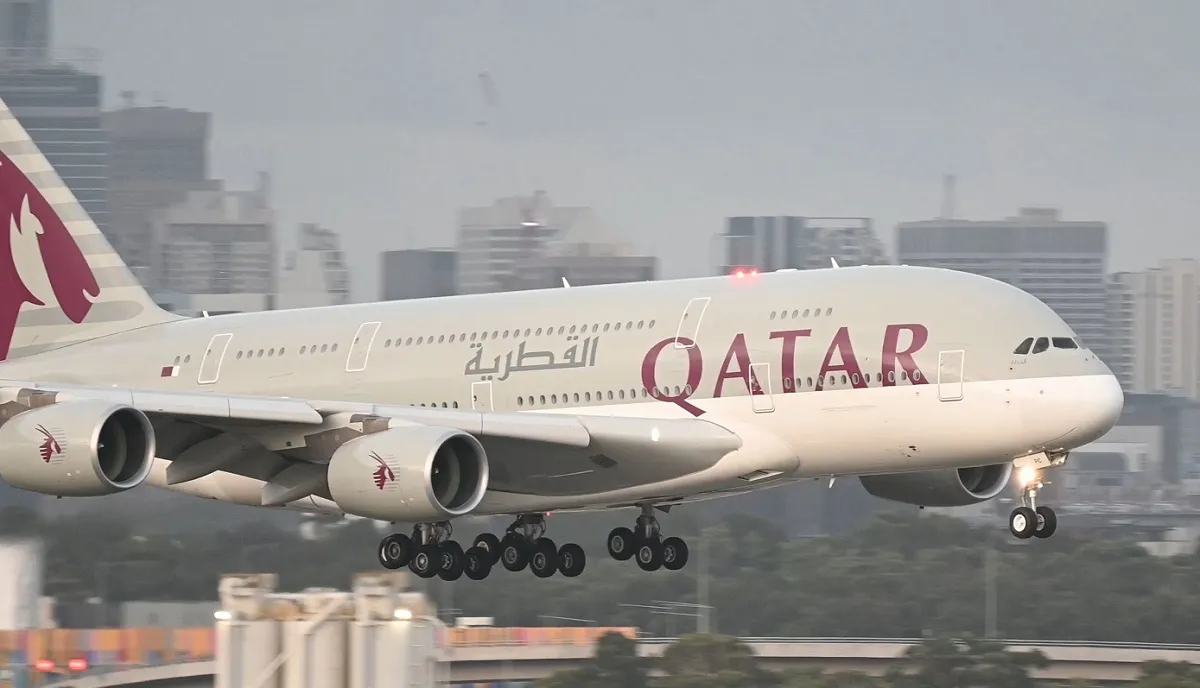Introduction to Etihad Airways and Emirates
When it comes to luxury air travel, few names resonate as strongly as Etihad Airways and Emirates. These two Middle Eastern giants have made a significant mark on the global aviation scene, offering travelers an array of choices that blend comfort with world-class service. As we look ahead to 2025, discerning passengers are faced with an intriguing question: which airline truly reigns supreme in terms of luxury, service, and global connectivity? Join us as we dive deep into this captivating comparison between these two renowned carriers. From rich histories to lavish in-flight experiences and expansive route networks, we’ll explore every angle in this ultimate face-off of Middle East airlines. Buckle up; it’s time for a thrilling ride!
History and background of both airlines
Etihad Airways was established in 2003, based in Abu Dhabi. The airline emerged as a key player quickly, focusing on premium services and modern aircraft. Its rapid expansion aimed to connect the UAE with the world.
Emirates began its journey even earlier, launching in 1985 from Dubai. With backing from the government, it grew into one of the largest international airlines globally. Their strategy revolved around excellent service and a strong marketing presence.
Both carriers have made significant investments in their fleets over the years. Etihad’s approach has centered on sustainability and innovation while Emirates emphasizes luxury through spacious cabins and state-of-the-art entertainment systems.
Throughout their histories, both airlines have forged global partnerships to enhance connectivity and expand routes beyond traditional markets. Each has carved out distinctive identities within an increasingly competitive landscape of Middle East airlines.
Fleet and route network comparison
Etihad Airways boasts a modern fleet with over 100 aircraft, including the impressive Airbus A380 and Boeing 787 Dreamliner. This enables Etihad to offer an extensive range of long-haul and regional flights.
Emirates, on the other hand, operates one of the largest fleets in the world—more than 250 planes featuring primarily Airbus A380s and Boeing 777s. Their network connects passengers across six continents.
Both airlines have hubs located strategically in Abu Dhabi and Dubai, respectively. Emirates’ hub is known for its seamless connections through terminal design that enhances passenger flow. Meanwhile, Etihad’s focus on luxury facilitates exclusive access to lounges and premium services.
When it comes to routes, Emirates leads with more destinations globally while providing multiple daily flights to major cities worldwide. In contrast, Etihad focuses on quality over quantity by offering select direct routes coupled with codeshare partners for wider reach.
In-flight experience: amenities, services, and entertainment
When it comes to in-flight experience, both Etihad Airways and Emirates set the bar high. Each airline offers a unique blend of luxury and comfort that caters to their passengers’ every need.
Etihad’s Business Class features flatbed seats with direct aisle access. Their famous “The Residence” is an unparalleled option for those seeking ultimate privacy during travel. Onboard chefs curate exquisite menus focusing on regional delicacies.
Emirates counters with its award-winning First Class suite, complete with sliding doors for enhanced seclusion. Passengers can indulge in gourmet dining options and savor fine wines paired perfectly by onboard sommeliers.
Entertainment systems are top-notch on both airlines. Etihad’s E-Box provides a vast library of movies, shows, and games. Meanwhile, Emirates leads the charge with ice (Information Communication Entertainment), boasting thousands of channels available at your fingertips.
With attentive cabin crew ensuring seamless service throughout the flight, these airlines continuously redefine passenger satisfaction in the skies.
Frequent flyer programs and rewards
Frequent flyer programs play a crucial role in distinguishing Etihad Airways from Emirates. Both airlines offer enticing benefits to loyal customers.
Etihad’s Guest program allows members to earn miles not just through flights but also via hotel stays, car rentals, and shopping. This flexibility can be appealing for travelers seeking more than just air travel rewards.
Emirates Skywards is equally competitive, offering tiered membership levels that unlock additional perks like lounge access and bonus miles on certain fares. Members can enjoy exclusive deals with partner hotels and retailers too.
The redemption process varies between the two airlines. Etihad provides options across its extensive global network while Emirates boasts an impressive array of destinations as well.
Both programs have their strengths but cater to different traveler needs. It’s essential for frequent flyers to assess which aligns best with their travel habits before booking airline tickets.
Customer reviews and satisfaction ratings
Customer reviews provide valuable insights into the experiences of travelers. Both Etihad Airways and Emirates have a loyal following, yet opinions can vary widely.
Etihad often garners praise for its attentive cabin crew and luxurious seating arrangements. Passengers frequently highlight the comfort level in both Economy and Business classes. However, some travelers mention inconsistencies in service quality on certain routes.
Emirates shines with its extensive entertainment options and onboard Wi-Fi services. Many customers rave about the diverse meal selections available during long-haul flights. Nevertheless, there are occasional complaints regarding delayed departures or crowded cabins during peak travel seasons.
Social media platforms buzz with feedback about both airlines. While many guests share glowing testimonials, others voice concerns that shape future offerings for these Middle Eastern giants. Each traveler’s experience tells a unique story as they navigate their journeys through these renowned carriers.
Future plans for expansion and improvements
Both Etihad Airways and Emirates are eyeing ambitious expansions in the coming years. Etihad aims to enhance its fleet with new aircraft, incorporating cutting-edge technology for improved fuel efficiency and passenger comfort. This shift is part of a broader strategy to expand routes across Asia and Europe.
Emirates, on the other hand, plans to bolster its existing services by increasing frequencies on popular routes. They are also focusing on upgrading their ground services and lounges worldwide, ensuring a seamless travel experience from check-in to boarding.
Investment in sustainability is another critical area for both airlines. They are committed to reducing carbon emissions through innovative practices and modernized fleets that prioritize eco-friendliness.
With these future initiatives, each airline seems poised not only to strengthen its market position but also to elevate the standard of luxury air travel in the Middle East.
The impact of COVID-19 on both airlines
The COVID-19 pandemic significantly altered the landscape for both Etihad Airways and Emirates. Initially, travel restrictions led to a sharp decline in passenger numbers. Both airlines grounded many of their aircraft as borders closed.
Etihad swiftly adapted by launching its “E-Check” service. This allowed passengers to manage their bookings digitally, minimizing contact at airports. Meanwhile, Emirates introduced enhanced health protocols onboard and at terminals, emphasizing safety measures like sanitization and face masks.
As vaccination rates increased globally, demand began to recover. Emirates expanded its routes faster than expected, capitalizing on pent-up travel desire.
Conversely, Etihad focused on rebuilding customer trust through flexible booking options and loyalty program enhancements. Their approach aimed at long-term recovery rather than rapid expansion.
These strategies reflected how each airline interpreted the crisis differently while navigating uncertainty in global travel dynamics.
which airline comes out on top?
When it comes to determining which airline reigns supreme, Etihad Airways and Emirates each have distinct strengths. Emirates boasts a larger fleet and an extensive global network, connecting passengers to numerous destinations across six continents. Their in-flight experience is often highlighted for its luxurious amenities and top-notch entertainment options.
On the other hand, Etihad Airways excels in personalized service. The airline places a strong emphasis on customer care, ensuring that travelers feel valued throughout their journey. Their business class offerings are also highly regarded for comfort and style.
Both airlines have made strides towards sustainable practices while navigating the challenges presented by COVID-19. Each has adapted to changing travel trends with future plans that prioritize both safety and luxury.
Customer reviews tend to reflect personal preferences; some may lean towards the vibrant atmosphere of Emirates’ onboard experience, while others appreciate Etihad’s more intimate approach.
The choice between these two Middle Eastern giants depends largely on individual priorities—be it route connectivity or service excellence. As they compete fiercely in the skies over 2025 and beyond, travelers can look forward to exciting advancements from both carriers as they strive for supremacy in luxury air travel.




